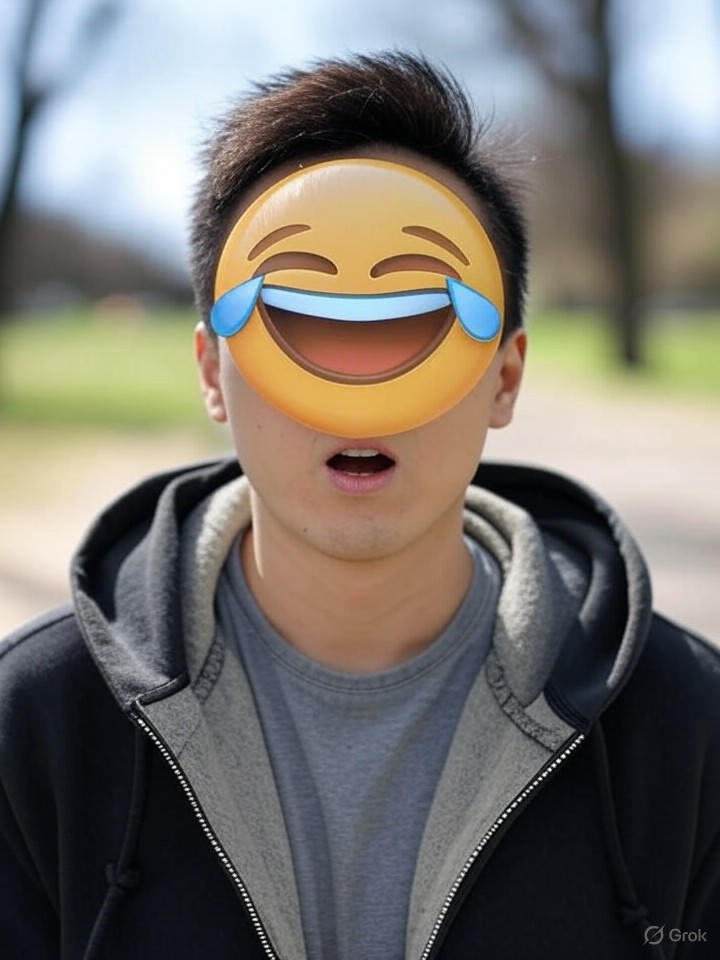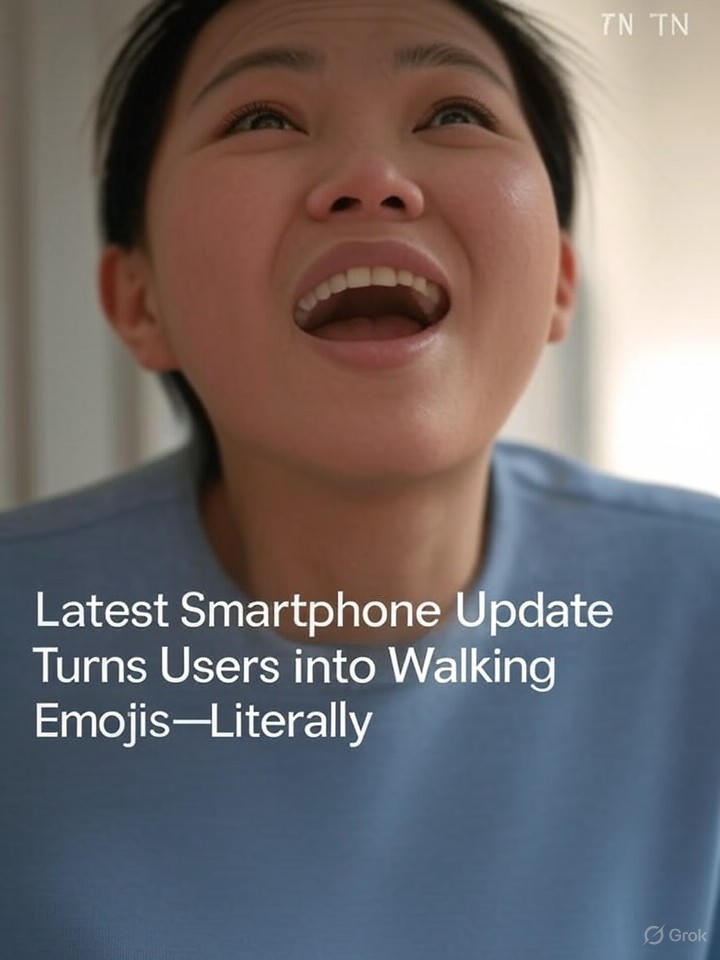In a move that's either groundbreaking or just plain creepy, TechGiant Inc. has rolled out its latest smartphone update, aptly named 'EmoteFace 2.0.' This feature promises to revolutionize how we communicate by syncing your phone's emoji reactions directly to your facial expressions. Forget typing out a laughing face—now your actual face will contort into a hysterical grin, complete with tears streaming down if you're feeling extra LOL-worthy. Early adopters are already reporting that their selfies have never looked so animated, literally.
The technology works via a sneaky little app that hacks into your phone's camera and uses AI to map your emotions in real-time. Feeling angry? Boom—your eyebrows furrow into that classic red-faced rage emoji. Ecstatic? Your mouth stretches into an unnaturally wide smile that could rival the Cheshire Cat. TechGiant claims it's all powered by 'harmless neural interfacing,' but skeptics are wondering if this is just a fancy way of saying they've turned our faces into remote-controlled puppets. One beta tester quipped, 'I tried to poker face during a bad date, but my phone betrayed me with a straight-up eye-roll emoji.'
User reactions have been mixed, with social media exploding in a frenzy of before-and-after photos. Influencers are loving it, turning mundane vlogs into emoji-fueled spectacles where their faces morph like cartoon characters mid-sentence. 'It's the ultimate expression tool!' gushed one TikTok star, whose video of reacting to bad news with a literal exploding head emoji went viral. However, not everyone's thrilled—office workers are complaining about accidental activations during meetings, leading to bosses seeing subordinates' true feelings in high-definition grimace form.
Critics, on the other hand, are sounding the alarm about the dawn of 'human bitmojis.' Privacy advocates argue that this update is a slippery slope toward total emotional surveillance, where your phone not only tracks your location but now your innermost feelings too. 'What's next? Mandatory mood reports to your employer?' asked Dr. Elena Privacy, a digital rights expert. There's also concern about cultural implications—will standardized emoji faces erase individual expressions, turning us all into a homogenized blob of yellow-headed sameness?
Medical professionals are weighing in with warnings about potential side effects. Dermatologists fear that constant facial morphing could lead to premature wrinkles or, worse, 'emoji burnout' where your face gets stuck in a perpetual thumbs-up pose. One plastic surgeon joked, 'Business is booming—I've got a waiting list for 'un-emoji-fications.'' Meanwhile, psychologists are debating if this tech enhances emotional intelligence or just turns us into performative clowns, forever chasing the perfect reaction shot.
TechGiant's CEO, in a press conference that featured his own face demo-ing a series of smug emojis, defended the update as 'the future of human connection.' He dismissed critics as 'stuck in the text-only Stone Age,' promising future updates that include body language syncing—imagine your whole posture shifting to a shrug emoji during awkward conversations. But with lawsuits already brewing over unauthorized face hacks, it seems this feature might be more of a facepalm than a high-five.
As the world grapples with this bizarre blend of tech and biology, one thing's clear: communication will never be the same. Whether it's a step toward empathetic utopia or a dystopian nightmare of enforced cheerfulness, EmoteFace 2.0 has us all making faces—some voluntary, some not. Stay tuned for the next update, rumored to include voice modulation for those pesky sarcasm emojis.

